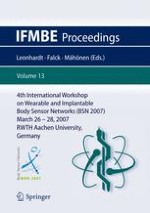About IFMBE The International Federation for Medical and Biological Engineering (IFMBE) was established in 1959 to provide medical and biological engineering with a vehicle for international collaboration in research and practice of the profession. The F- eration has a long history of encouraging and promoting international cooperation and collaboration in the use of science and engineering for improving health and quality of life. The IFMBE is an organization with membership of national and transnational societies and an International Academy. At present there are 52 national members and 5 transnational members representing a total membership in excess of 120 000 worldwide. An observer category is provided to groups or organizations considering formal affiliation. Personal membership is possible for individuals living in countries without a member society The International Academy includes individuals who have been recognized by the IFMBE for their outstanding contributions to biomedical engineering. Objectives The objectives of the International Federation for Medical and Biological Engineering are scientific, technological, literary, and educational. Within the field of medical, clinical and biological engineering it’s aims are to encourage research and the application of knowledge, and to disseminate information and promote collaboration.
